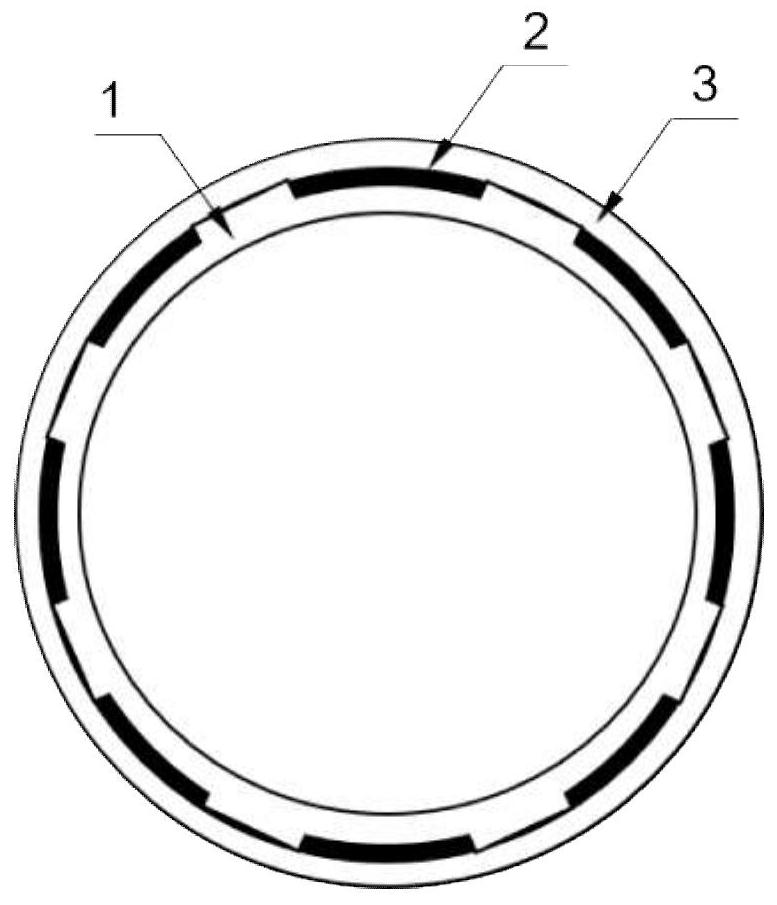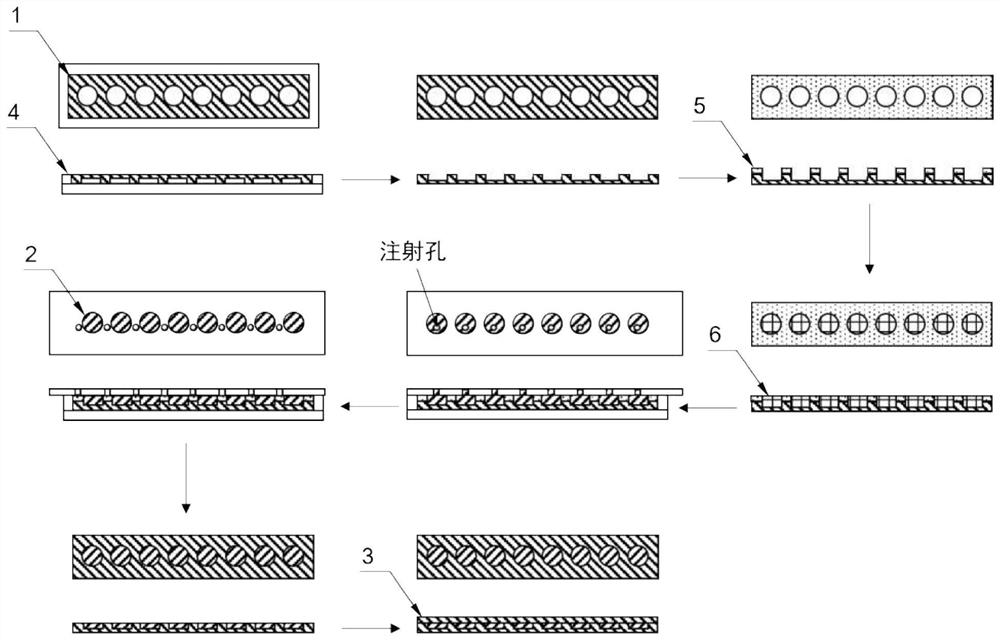Human body intention recognition sensor and recognition method based on friction power generation
A technology of friction power generation and sensors, which is applied in the field of human body intention recognition, can solve the problems of limiting the application of gesture recognition sensors, the inability to detect the movement state of the wrist, and the large number of wearable system hardware, so as to facilitate recognition and classification, and achieve high signal amplitude. value, the effect of a simple system structure
- Summary
- Abstract
- Description
- Claims
- Application Information
AI Technical Summary
Problems solved by technology
Method used
Image
Examples
Embodiment 1
[0037] see figure 1 , the present invention provides a human body intention recognition sensor based on triboelectric generation, which includes a negative material layer 1 and a plurality of flexible electrodes 2 .
[0038] The negative charge material layer 1 is preferably ring-shaped, and the negative charge material layer 1 can be sleeved on the wrist of the human body and worn like a bracelet, so that the contact between the negative charge material layer 1 and the skin generates friction and then generates electrical signals. The material of the negative material layer 1 is preferably one of polydimethylsiloxane (PDMS), 3M-VHB tape, polyethylene terephthalate, and polyimide.
[0039] A plurality of flexible electrodes 2 are arranged at intervals on the outer surface of the negative material layer 1 , that is, a plurality of flexible electrodes 2 are arranged annularly on the outer surface of the negative material layer 1 . When the negative charge material layer 1 is wo...
Embodiment 2
[0044] This embodiment provides another human body intention recognition sensor based on triboelectric power generation, including a plurality of friction nanogenerators and a wristband, and a plurality of friction nanogenerators are respectively arranged on the inner side of the wristband, so that Ring arrangement.
[0045] The triboelectric nanogenerator includes a negative material layer with negative electrical characteristics and a flexible electrode, the negative material layer is in contact with the skin to generate an electrical signal, and the flexible electrode is located between the negative material layer and the surface of the bracelet for The electrical signal is derived.
[0046] In the same manner as in Example 1, at least one of the extensor carpi ulnaris tendons, flexor digitorum superficialis tendon, extensor carpi radialis tendon, flexor carpi radialis tendon, extensor digitorum tendon and extensor hallucis longus tendon of the human wrist is respectively a...
Embodiment 3
[0055] This embodiment provides a method for human body intention recognition using the human body intention recognition sensor based on triboelectric generation in the above-mentioned Embodiment 1 and Embodiment 2, such as image 3 As shown, the method includes the following steps S1-S3.
[0056] S1: Using the human body intention recognition sensor to collect electrical signals under different human intentions.
[0057] The user wears the human body intention recognition sensor on the wrist, and makes the flexible electrode be located at the position corresponding to the designated tendon of the wrist. In this embodiment, the designated tendon of the wrist includes at least: extensor carpi ulnaris tendon, flexor carpi digits superficial tendon, carpi radialis extensor tendon, flexor carpi radialis tendon, extensor digitorum tendon, and abductor hallucis longus tendon. During collection, users can keep their palms parallel to the desktop and make different gestures, and coll...
PUM
 Login to View More
Login to View More Abstract
Description
Claims
Application Information
 Login to View More
Login to View More - R&D
- Intellectual Property
- Life Sciences
- Materials
- Tech Scout
- Unparalleled Data Quality
- Higher Quality Content
- 60% Fewer Hallucinations
Browse by: Latest US Patents, China's latest patents, Technical Efficacy Thesaurus, Application Domain, Technology Topic, Popular Technical Reports.
© 2025 PatSnap. All rights reserved.Legal|Privacy policy|Modern Slavery Act Transparency Statement|Sitemap|About US| Contact US: help@patsnap.com



